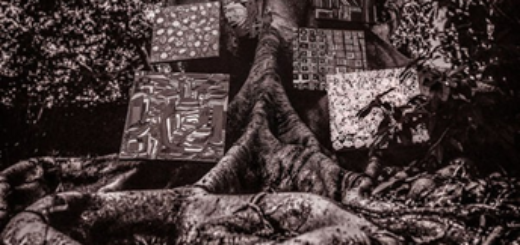Brown Eyed Handsome Man: A Chuck Berry Retrospective
“Ridin’ along in my calaboose
Still trying to get her belt a-loose
All the way home I held a grudge
For the safety belt that wouldn’t budge
Crusin’ and playin’ the radio
With no particular place to go”
In my mind, nothing better captures the ethos of 1950s youth culture than the final verse of Chuck Berry’s “No Particular Place to Go.” Berry’s words are visceral and straight-to-the-point. They elicit feelings of lust and malaise, speaking to a generation of disaffected young people. Berry, the grand architect of rock ‘n’ roll, passed away Saturday afternoon at his home in St. Charles, Missouri.
Often those who write In Memoriam articles become too concerned with familiarizing the uninitiated with the popular work of the deceased. It always seems to become an issue of “legacy.” What mark did the artist leave? Why should we reflect on his/her passing? In struggling to articulate my thoughts on such an important figure in American music, I choose to forgo rattling off a list of his hits and misses or analyzing the man’s discography. Instead, I think it’s best to discuss what shaped his music and why it became resonant in a time of great unrest.
The central appeal of Mr. Berry was that he represented the everyman. He wrote mostly about cars and girls and girls in cars. What set Berry apart from many of his contemporaries was how he knew his audience. At a time when much of what populated the airwaves was written by old, out-of-touch white men, Berry was given the freedom to write his own material. He specifically tailored his music to teenagers, feeling that they were the major purveyors of popular culture.
Although his listeners were mostly under the age of 25, Berry was in his mid-30s at the height of his popularity. He drew upon his own experiences as a troubled teen in writing for his young audience. Berry discovered his passion for performing while in reform school, working a number of odd jobs and being married all before gaining attention for his galvanizing performances at dance halls across St. Louis. He was also known for his proclivity for younger women (something that eventually lead him to serve time following an interstate road trip with an underage girl). He channeled all of this into his music.
Aside from being the original Mr. Steal Your Girl, Berry was a mad scientist. His music is a fusion of jazz, folk, blues, country, and swing. Berry idolized musicians like Nat King Cole, T-Bone Walker, and Louis Jordan. Whether it was the flamboyant strumming and showmanship of T-Bone or the charismatic performance style of Nat, Berry’s on-stage prowess was shaped by many of the great jazz and blues musicians of the 1940s. Louis Jordan’s music significantly influenced Berry’s sound. Jordan made a name for himself as leader of the Tympany Five and pioneered a genre known as “jump blues,” which would later become swing. It’s no secret the iconic opening riff of “Johnny B. Goode” is lifted straight from Jordan’s “Ain’t That Just Like A Woman.” It’s impossible to mention one without the other; Berry and Jordan are intrinsically linked.
Berry, who once described his music as “country bumpkin jazz,” drew his songwriting inspiration from blues legends Muddy Waters and Lead Belly. Although the stories he told were less grave and distressed than those of Waters and Belly, his words denote a rich imagery found only in the work of the greats. Berry elevated decades old blues and jazz-style standards into the mainstream. Take, for example, “Ida Red,” a traditional folk song of unknown origins. Mr. Berry interpolated the Western fiddle elements of this folk ballad in his breakthrough, “Maybellene,” a track that concerns a man chasing his unfaithful girlfriend. Berry’s use of established musical structure and motifs helped illuminate work by artists that had long gone unnoticed by the masses.
Chuck Berry’s music was the antithesis of the traditional values of 1950s’ suburban America. To many parents, he represented the rebellious boy you didn’t want your daughter to date. He represented youth insubordination in the flesh and it contributed to his popularity, bringing what many considered a fad into the public consciousness.
For Berry, music was more than just a form of entertainment or a topical piece of popular culture. Music had the ability to affect people and be reflective of an attitude. Under Berry, rock ‘n’ roll became an instrument of defiance. His music connected with the disaffected youth of Cold War America. I don’t think rock music would have the same subversive connotations if it weren’t for the innovations of Berry.
It should be noted that Berry has a distinction few other artists of his era can share in. “Johnny B. Goode” was included on mankind’s mixtape, the Voyager Golden Record, an LP NASA launched into space as a part of the Voyager I mission in 1977. The record is currently making its journey through interstellar space.
There is much to be said about the musicians Berry influenced, but perhaps that’s best left for someone else to detail. In short, Berry and his contemporaries, Little Richard, and Muddy Waters were integral to the blues-inspired sound of 1960s British groups like The Stones, The Beatles, and Cream. Oh yeah, and then there’s Elvis. The King rose to prominence around the time Berry was gaining recognition at sock hops and teen dances. But Elvis became a brand and Berry became irrelevant. Perhaps it was that white musicians like Presley and Buddy Holly were more commercially palatable by virtue of their skin color. Despite Berry’s career potential being stunted by racial politics, he was the greatest on-stage performer of his generation.
Berry’s boundless energy translated into a stage presence second to none. Each performance was a study in movement and sound. Berry was never anchored in one place, he moved around the stage. Berry proved that live performance was not exclusively auditory, but visual as well. He was always most comfortable when on stage. As recently as 2015, he was still performing monthly on Blueberry Hill in St. Louis. On his 90th birthday last October, Berry announced he was recording what would be his first album in 38 years. The album release is still up in the air, but if anything is certain, it’s that the work of the Master of the Duck Walk will live on here and throughout the cosmos forevermore.



